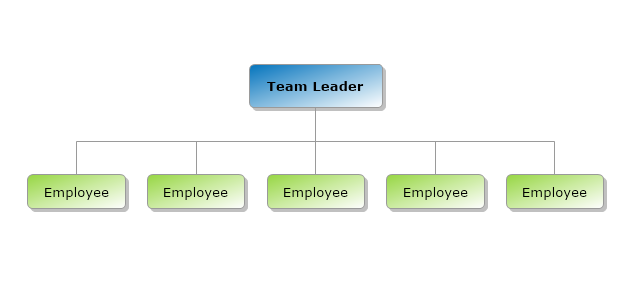When you’re responsible for a team’s performance, you might feel the itch to micromanage. You might be thinking, if you don’t watch employees’ every move and assign all tasks, how will the group stay on track?
But micromanaging stifles the creativity and collaboration that drives high performance teams. Multiple studies have shown that micromanaged employees are less creative, produce lower-quality work, and are less engaged overall. On top of that, micromanagement can be demoralizing — one survey found that almost 40% of employees felt micromanaging was the worst possible trait in a boss.
We’ll show you how to build high performance teams by fostering collaboration and independence — and how to avoid the micromanagement trap.
Be transparent about team goals
Share your team’s larger objectives with employees to keep them motivated. That includes sharing company-wide goals as well as team-specific goals. Your group will be more likely to stay engaged if they know what they’re working toward and how their efforts impact the business. Teamdeck suggest open communication and project transparency lead to a happier, better performing team.
Clearly defined goals can also lower employees’ anxiety around work. According to a survey from Comparably, 41% of employees say unclear goals are their top source of stress at work.
One way to make sure you and your team are on the same page is to display goals in a team-public space. For example, you could build a dashboard that shows how the group’s current performance compares to target key performance indicators (KPIs). With this view, employees can see their goals and the progress they’ve made.

In an office, you might display this dashboard on an office TV. Or, if your team is remote you could schedule daily screenshots of your dashboard to Slack, bookmark a sharing link or even embed your dashboard in places everyone spends a lot of time such as staff intranet, Notion or Confluence.
Let employees divvy up tasks among themselves to decide how to meet team objectives. Why? Because research shows that autonomy at work leads to higher employee retention and job satisfaction.
It’s up to you to share clearly defined goals to show your team members what they’re aiming for. But let them figure out the best way forward. This freedom will likely keep your high performance team motivated.
Need more help choosing team objectives? Check out our ultimate guide to setting business goals.
Create a sense of ownership by asking for group input
If the only reason your group has for completing a task is, “Because I said so,” chances are they won’t feel any ownership over the project at all. But feeling connected to the project is important for high performance teams. A study by the University of Oxford found that a sense of ownership has a positive impact on both employee performance and motivation.
Start by explaining the reasons behind team goals to employees. You want each member to feel that these are their objectives, too, not just yours. If employees have a strong sense of responsibility, they are more intrinsically motivated, as opposed to the extrinsic motivation that comes from being assigned a task. Intrinsic motivation leads to higher levels of productivity and creativity.
You can also give team members more ownership over their work by involving them in the goal-setting process. Ask employees to help you choose the best KPIs for each goal.
Depending on your team size and the number of goals or projects you have, it might be too time-consuming to select every KPI this way. But you can at least get team input on a “north star” metric to create a level of involvement.
If your team is remote, use digital tools for communication and collaboration, such as Slack or Microsoft Teams. Shared documents and team-public communication channels will help all members offer their input, regardless of where they live.
Enable faster decision-making with a flat team structure
In a flat team, there are fewer layers of management than you see in a hierarchical structure. The team reports directly to upper management without having to go through a middle manager first. This means the group can work collaboratively, sharing authority and making decisions as a group.

A team with a flat structure can act more quickly. Top-down requests move through few approvals, so team members can take action to solve issues. For example, marketing executives might request new features based on customer feedback. These suggestions can go straight to the development team without filtering down through multiple layers of management.
A flat team structure also creates a feeling of involvement. Because the team can communicate directly with upper management, they quickly get feedback on their efforts. Team members can immediately see the response to their work, and each person is equally involved in the creation and feedback process. This helps foster a collaborative atmosphere, both within the group and between the team and executives.
Keep in mind that a completely flat structure has its limits. It works best for small groups — under 15 or 20 people. With a larger team, your organization may need to add extra managers to keep your workload manageable.
Foster open communication
Last, but certainly not least, encourage employee feedback and input from all team members. You could do this in meetings or by sending out surveys. Provide channels for employees to tell you about any concerns they’re having. Unresolved problems don’t just go away. They build, and they only get worse over time.
Once a team issue becomes urgent, it’s harder to avoid micromanaging. You have to solve the problem as quickly as possible, which often means jumping into the issue yourself.
Open communication minimizes problems that need this level of involvement. If employees feel welcome to share their input about work, you’re more likely to hear about potential concerns before they grow. Then you can work with the team to find collaborative solutions instead of having to dictate what needs to be done.
Encourage employee feedback by having an open-door policy. Let your team know you’re available to hear their concerns or just to talk. Hold regular one-on-one and team meetings to encourage in-person conversations, and promptly respond to employees’ communication.
Employees may not be comfortable approaching you with problems at first. Get the ball rolling by starting the conversation. Ask employees what they need to be productive and work collaboratively.
And remember, team communication doesn’t always need to be about work. An IBM study found that building interpersonal relationships between team members is a key feature of high performance teams. This is just as true for building relationships between employees and managers. Ask employees about their weekends and the books they’re reading. If team members feel comfortable with their manager, they’ll be more likely to voice ideas and concerns.
Create high performance teams with collaborative management
Creating high performance teams doesn’t happen overnight. It requires an open, collaborative culture — and that takes time to build.
The key is not to simply pay lip service to these ideals. Reflect them in your managerial style by keeping your door open, letting team members take the lead, and, above all, not micromanaging.
Over time, employees will feel a greater sense of ownership in their work. That feeling will likely drive them to not only work harder but also be more innovative.

